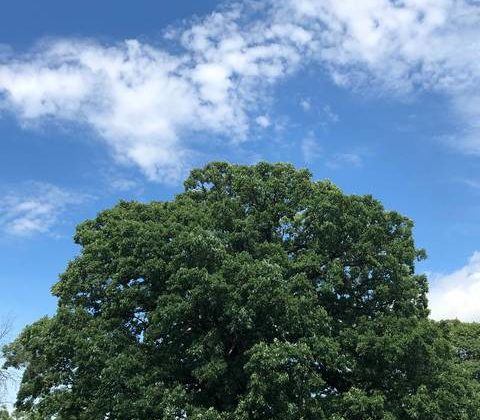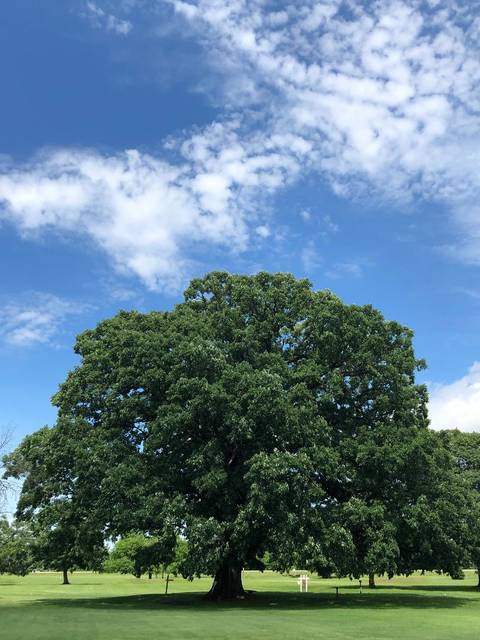
‘People really gravitate toward’ Champion Trees
By Sarah Allen
Photos courtesy of Alistair Reynolds

Ohio’s largest trees are rooted in something far richer than soil — national history. The Champion Trees program is a state-by-state effort to preserve our grandest resources for generations to come.
The Ohio Division of Natural Resources’ Division of Forestry is the state level of the program. Alistair Reynolds, a forester at ODNR, said that the register began in the 1940s as a response to the Dust Bowl, the construction of railroads and other factors that had contributed to the loss of trees.
“Deforestation had been happening for a couple hundred years,” he added.
The American Forests’ website further explains the register’s launch. Beginning in September 1940, the register “started out as a competition, a national hunt to discover and preserve the largest specimens of American tree species.” This search found its way throughout the country—everywhere from forests to backyards.
And now, 80 years later, that search is still going strong.
Reynolds described the process of a tree becoming recognized as a champion. All nominations are submitted by the public, either online or via email. The criteria depends on the tree’s species. Some trees, such as oaks and cottonwood, will naturally grow larger than trees such as flowering dogwoods and eastern redbuds.
Nominations must include ownership of the tree, location and the tree’s circumference. Pictures are also helpful, if possible.
Reynolds added that “multiple stem trees” are no longer considered champion trees. Those are trees that grow together in a clump, resembling one large specimen when in reality they are several trees.
Many of the Champion Trees will have plaques indicating that they are a part of the register, Reynolds said. In fact, 30 percent can be found in cemeteries.
He added that, while many people may not imagine that Ohio has massive trees — with most thinking of the west coast’s redwoods and sequoias — there are many specimens that “get absolutely huge.”
The most gigantic tree in Ohio is the Jeromesville Sycamore. The tree is 436 inches in circumference, which is “greater than 10 feet,” Reynolds said.
The sycamore is hollowed out, which allows visitors to “walk inside.”
The tallest tree in Ohio, Reynolds said, is a white pine in the Zaleski State Forest. It reaches 165 feet.
Champion Trees — in all shapes and sizes — are something “people really gravitate toward,” Reynolds said.
“The public loves it,” he added. “They really connect to them.”
ID, 'source', true); $sourcelink = get_post_meta($post->ID, 'sourcelink', true); $sourcestring = '' . __('SOURCE','gabfire') . ''; if ($sourcelink != '') { echo "
$sourcestring: $source
"; } elseif ($source != '') { echo "$sourcestring: $source
"; } // Display pagination $args = array( 'before' => '' . __('Pages:','gabfire'), 'after' => '
', 'link_before' => '', 'link_after' => '', 'next_or_number' => 'number', 'nextpagelink' => __('Next page', 'gabfire'), 'previouspagelink' => __('Previous page', 'gabfire'), 'pagelink' => '%', 'echo' => 1 ); wp_link_pages($args); // Display edit post link to site admin edit_post_link(__('Edit','gabfire'),'','
'); // Post Widget gab_dynamic_sidebar('PostWidget'); ?>